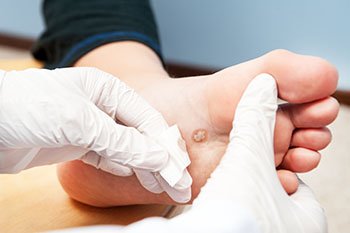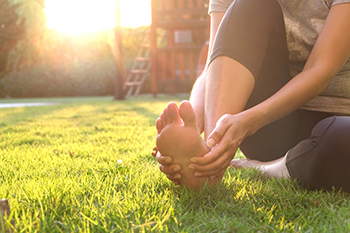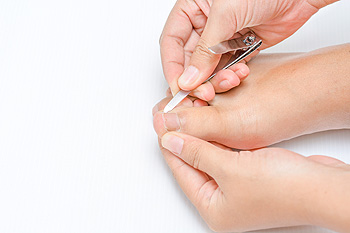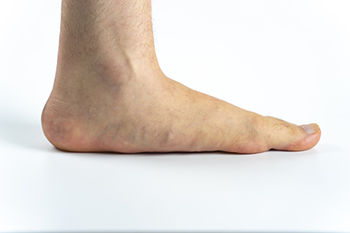Plantar warts are fleshy growths on the sole of the foot that are caused by human papillomavirus (HPV). When this virus enters the feet through a small crack in the skin, it forms foot warts. These warts may occur individually or in clusters. They’re usually small, rough, grainy patches of skin that disrupt the skin’s natural lines. Unlike calluses, plantar warts have a blood supply, which is visible as tiny, black dots in the center of the wart.
Plantar warts are typically asymptomatic and can go away on their own within a period of several months to several years. However, sometimes warts grow in areas that bear weight. The pressure of standing and walking causes the wart to grow inwards, potentially leading to discomfort or pain. There are various treatment options available. If opting for medical treatment, warts can be removed with chemicals, cryotherapy, laser therapy, or minor surgery. Each type of treatment has its own benefits and drawbacks, which should be discussed with your chiropodist. Wearing comfortable shoes and socks, taking over-the-counter pain medications, and wearing patches to take pressure off of the warts can help if you choose to wait for them to go away on their own.
Plantar warts are highly contagious and can spread from person to person through direct contact or through contact with an infected surface, but they can often be prevented with good foot hygiene practices. The virus that causes plantar warts can be contracted from walking barefoot in public areas, like swimming pools, locker rooms, and showers. Wear flip-flops or shoes to protect your feet when frequenting these areas. Avoid sharing personal items, like towels, shoes, and socks, with others. For more information about prevention and treatment, please consult with a chiropodist.






